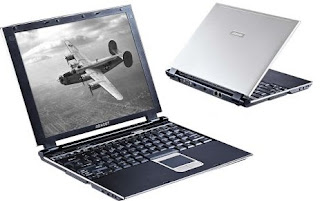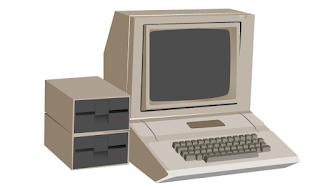Toshiba Portege R100 - Installing Windows
The Portege R100 was a high-end Ultrabook produced by Toshiba. Released in 2004, it was a thin, lightweight notebook, part of a series of machines carrying the Portege model name. The specs were an Intel Centrino Pentium M 1Ghz processor, Trident XP4 Graphics at 32Mb, Intel 855PM Chipset, up to 1.25Gb of DDR memory, 1024 x 768 XGA 12.1" Screen, and Ultra Low Voltage (ULV) coming in at less than 4lbs (1.81Kg)
On release the price was over £2000, but this quickly dropped to £1500 to increase sales within business and office circles.
These notebooks have been quite sought after in the past few years, but are getting thin on the ground due to a few issues. One of those issues has been that they were thin and light-weight, meaning that they broke easily in the fat sweaty hands of over-weight business men, and parts were expensive, so lots of machines were broken down for parts.
The main problem in later years was that the unit was built with a 1.8" harddrive, more commonly found in Ipods, and an old bios that was badly thought out. The bios allows booting from the harddrive, an external usb floppy drive, or even a cdrom drive (connected to the pcmcia port and not faster than 16x) but would not boot from usb, be it a thumb drive or usb cdrom drive. Not initially a problem, until the harddrive failed and then you needed the recovery floppy disk and recovery software cd.
The recovery software was once obtainable from the Toshiba website, but sadly, no longer as it has been taken down.
If like me, you come across one of these on Ebay, and think 'that looks rather nice, I could use one of those' and it is listed as faulty with no operating system, you might not be too overly concerned and make a bid. Of course, on winning and receiving the unit, you realise this is not going to be the easy little project that you first envisaged.
So, I have the notebook and I have a toshiba charger. I have a usb floppy drive and two external drives (one toshiba pcmcia cdrom at 24x and I have a usb dvdrom drive with external power) and a few iso's on usb flash drives. I dont have the original recovery software, but I have a few Toshiba cdroms from various laptops with xp o.s.
First off, I cannot boot from usb, so the flash drives and the dvdrom drive are of no use. I have a usb floppy drive, which will actually register and boot, I have no idea why it boots from floppy only, maybe because fdd is an option in the bios. I also have the cdrom drive that has the pcmcia card, but it wont register because it is too fast (24x not 16x)
Not to be completely deterred I try to remove the hdd and install it into another laptop for windows installation. This is when I find out that the harddrive is 1.8" and not a standard 2.5" harddrive. Oh whoopie! this just gets better and better.
To cut a very long story short, I tried to install a CF Flash card, but it didn't like it, so I bought an adapter (1.8 to 2.5) and hooked the harddrive up to my pc via a usb hdd cable, and the 1.8" harddrive was stuffed. Back to Ebay, bought a 60Gb harddrive and ran into more problems.
The R100 will only recognise FAT32, and windows only recognises FAT32 up to 32Gb, so the harddrive had to be partitioned into two FAT32 partitions and re-installed into the notebook. Which was a waste of time because I couldn't get anything from the notebook at all. This was starting to look like a lost cause.
For a while, this project sat on the shelf, staring at me and taunting me. I would research different methods for installing windows onto it, but nothing was feasible. Then I came across something rather interesting, Plop.
Plop is not a funny noise but a company name for a linux program, with one main function in mind, to allow older machines to boot from usb, even when the machines bios doesn't give that option. It's basically a boot manager that is installed onto the harddrive, simple and marvellous.
Plop is the creation of Elmar Hanlhofer, an independant software developer from Vienna. You can find his website here
https://www.plop.at/en/home.html
This software is incorporated into a piece of software called EasyBCD, which basically has all the tools that you need.
https://www.techspot.com/downloads/3112-easybcd.html
For easy instructions there are video's on YouTube. The one I followed was 'How to boot from USB if not supported by BIOS'
https://www.youtube.com/watch?v=N6KgK-pPilA
So basically I connected the 1.8" harddrive to my pc with the usb cable and followed the instructions from the video (1m 44s in) and installed the software to my harddrive, then replaced the harddrive into the R100. I then started the notebook and booted from a usb flash drive.
The first time I tried this was with a FAT32 drive with Tiny7 on it, and it installed. But it didn't run very well because I only had 512Mb of memory, So I decided to install XP instead. I made a flashdrive with rufus containing a copy of XP pro, and ran into issues. Basically, it kept freezing and I couldn't install XP.
I think the issues were that the flash drive may have been formatted in NTSF instead of FAT32, also, I have since come to realise that not all programs make XP bootable on usb drives. I ended up connecting the 1.8" harddrive up my pc again and wiping the partitions, starting from scratch, and re-installed plop using EasyBCD.
The R100 is currently running Tiny7, and is awaiting a 1Gb DDR ram stick, If I can find a decent one instead of a dodgy looking chinese one from Ebay, and works for what I wanted it for, which was playing music and video from a flash drive at work.
I used ISO to USB to format the flashdrive for install and used cacheman to optimise the R100 after installing Tiny7. Just remember, when installing any windows 7, the target drive needs to be formatted in NTFS. So you format the harddrive partitions in FAT32 to be recognised by the bios and change the format of the partition to NTFS when the Tiny7 installation prompts you to.
This whole project has been an adventure and a nightmare, but definately a learning curve, and If I manage to get XP on here, I'll be sure to let you know.












Comments
Post a Comment